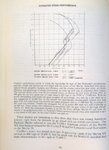Shortround6
Major General
NACA studies said the paint for the national insignia disrupted the laminar flow.
Going back to the P-40, lets not forget that the original XP-40 tried several different locations, starting with under the fuselage behind the cockpit and several versions of the under nose arrangement were tried before production started (planed picked up 40-50mph along the way) and several different radiator locations were tried on later models (not including the Q). It might not be as bad as we think.
Carb intakes get tricky, how much external drag? How much internal drag? How much RAM effect can they provide vs how much drag?
Going back to the P-40, lets not forget that the original XP-40 tried several different locations, starting with under the fuselage behind the cockpit and several versions of the under nose arrangement were tried before production started (planed picked up 40-50mph along the way) and several different radiator locations were tried on later models (not including the Q). It might not be as bad as we think.
Carb intakes get tricky, how much external drag? How much internal drag? How much RAM effect can they provide vs how much drag?

